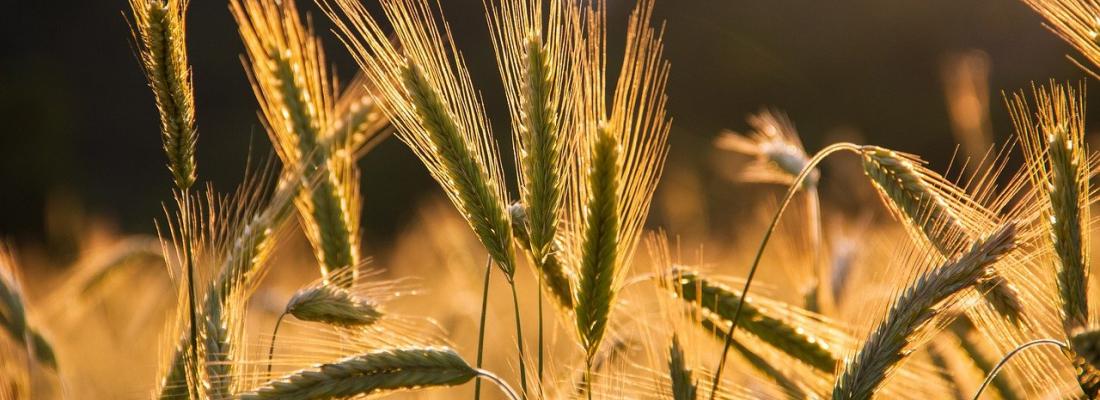France
January 27, 2022

Re-thinking the agriculture of tomorrow means developing sustainable and efficient production techniques. One promising avenue is cultivar mixtures. This practice has been in full swing for more than a decade, but is still too unpredictable in terms of performance. To explain this variability in mixtures, researchers from INRAE, CNRS and Institut Agro Montpellier carried out a vast genetic analysis. They showed that one particular region of durum wheat DNA is pivotal: if there is diversity to be found there, the performance of cultivar mixtures is compromised. These novel and counter-intuitive findings were published in New Phytologist on 26 January 2022.
By observing natural environments, it is clear that plant diversity often fosters many mechanisms necessary for the proper functioning and stability of ecosystems. This is a principle that agroecology aims to integrate into its practices and crops to develop a more sustainable agriculture. Nevertheless, the biological mechanisms at the root of this positive link between genetic diversity of plant stands and the functioning of said stands is little documented. That is why it is still difficult to fully tap into this diversity in agroecosystems.
To shed light on the underlying mechanisms, a group of researchers from INRAE, CNRS and Institut Agro Montpellier proposed an approach based on the genetic information of components of cultivar mixtures. For their experiment, they put together 200 binary cultivar mixtures (that is, made up of two cultivars) of durum wheat. They then measured their productivity and susceptibility to septoria leaf blotch, one of the most concerning diseases that affects wheat. Their goal? To identify regions in the genome where genetic diversity is strongly linked to the performance of mixtures (both productivity and susceptibility to disease).
A region of durum wheat DNA responsible for weakened performance of mixtures
First and foremost, their results confirm the agricultural literature: mixtures are on average more productive and less prone to disease than monovarietal crop stands. But the scientists made a surprising observation: one particular region of the DNA stands out from all the rest. Indeed, the presence of diversity in the mixtures in that region of the genome correlates to lower production and increased susceptibility to disease. It therefore seems that the positive effects of diverse mixtures may be counteracted by unfavourable genetic associations at some regions in the genome. This is the first time such an effect has been shown in a cultivated species.
These negative effects induced by genetic diversity could explain, at least in part, the high variability of performance between mixtures traditionally reported in the literature. That is why identifying genomic regions that affect the performance of mixtures would allow scientists to tailor high-performing mixtures while avoiding, to some extent, more cumbersome and expensive phenotyping measures. This is a promising avenue for diversified and efficient agroecological practices.
The roots of a popular practice
Cultivar mixtures, a practice that consists of sowing several varieties of the same species in a field, is all the rage. For some ten years now, areas cultivated with mixtures have been on the rise in France, with bread wheat, for example, gaining ground. Indeed, only 1% of French soil was sown with mixtures in 2007, compared with 12% in 2019. Nevertheless, the performance of mixtures varies widely depending on their composition, and can sometimes prove less desirable than monovarietal stands.
So far, research aimed at understanding the link between the composition of mixtures and their performance has focussed mainly on the observable characteristics (phenotypes) of the components that make up the mixture, for example root depth. This is because different ecological theories hold that varieties that have different characteristics, such as, for example, different root depths, are less in competition with each other than varieties that share identical characteristics. As such, to boost the performance of a mixture, farmers would have only, for example, to combine varieties with different root depths. But few experiments have shown such a mechanism of complementarity in mixtures.
Other characteristics are being studied, notably the dynamics of leaf and root architecture, but the experiments required to study them are onerous to put into place. Research therefore tends toward modelling to understand the link between these complex characteristics and the performance of mixtures.
Reference
Montazeaud G., Flutre T., Ballini E., Morel J-B., David J., Girodolle J., Rocher A., Ducasse A., Violle C., Fort F., Fréville H. 2021. From cultivar mixtures to allelic mixtures: opposite effects of allelic richness between genotypes and genotype richness in wheat. New Phytologist https://nph.onlinelibrary.wiley.com/doi/10.1111/nph.17915?af=R